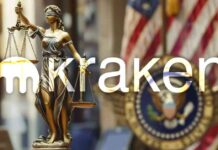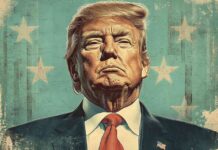The recent announcement by the U.S. government to establish a Strategic Bitcoin Reserve and a Digital Asset Reserve has sent shockwaves through the cryptocurrency community. This bold move, spearheaded by President Donald Trump, signifies a notable departure from previous approaches to digital currency, as reported by blog.bitfinex.com. The plan aims to seamlessly integrate cryptocurrencies into the national financial framework, sparking a heated debate on topics ranging from decentralization to investment strategies.
U.S. Strategic Bitcoin Reserve: A Paradigm Shift
Unveiled on March 6, 2024, the U.S. Strategic Bitcoin Reserve will initially consist of Bitcoin acquired through various legal proceedings. Notably, the government plans to utilize existing assets rather than making new cryptocurrency purchases, following a budget-neutral strategy. Furthermore, a separate fund will oversee the management of additional digital assets like Ether, XRP, Solana, and Cardano, although there are no immediate plans for further acquisitions.
The upcoming conference is expected to delve into the intricate details of managing these reserves and their implications on U.S. crypto policy. Key topics on the agenda are likely to include discussions on legal transparency, institutional adoption, and the role of digital assets in the national economy. Despite the high expectations surrounding this initiative, market reactions have been lukewarm, with Bitcoin’s value taking a slight dip of over 5%, accompanied by similar declines in other major cryptocurrencies, as investors express their disappointment over the absence of new crypto acquisitions.
Broadening Horizons: Beyond Bitcoin
The 2024 U.S. presidential election witnessed a significant focus on cryptocurrency, with candidates from various parties engaging with crypto enthusiasts. Notably, former President Donald Trump and independent candidate Robert F. Kennedy Jr. raised the concept of a “Strategic Bitcoin Reserve” at the Bitcoin Conference in Nashville, presenting it as a means to fortify financial sovereignty and position the U.S. as a trailblazer in the realm of digital assets.
Following his reelection, President Trump stayed true to his promise of fostering a crypto-friendly environment. One of his initial steps was issuing an executive order to establish a task force dedicated to exploring the establishment of a Digital Asset Reserve, sparking newfound enthusiasm in the crypto market. Unlike previous administrations that took a strict stance against crypto exchanges, Trump’s administration has chosen to integrate digital assets into the national financial system.
However, the decision to incorporate a diverse range of assets beyond Bitcoin has elicited mixed reactions. Bitcoin maximalists, who advocate for Bitcoin exclusively, have expressed disappointment over the inclusion of Ripple (XRP), Solana (SOL), and Cardano (ADA). This has given rise to debates revolving around whether the government should prioritize decentralization or opt for a more diversified investment approach.
The Power Struggle: Freedom vs. Control
The unveiling of the U.S. Strategic Bitcoin Reserve has sparked intense debates within the crypto community. Supporters view it as a monumental milestone, offering credibility and fostering institutional adoption. They argue that the reserve could potentially enhance the U.S.’s financial standing in the digital era.
On the flip side, critics are concerned that the government’s endorsement of specific digital currencies could undermine the decentralized essence of cryptocurrency. By cherry-picking certain assets, the government risks distorting a market that has traditionally thrived on free competition. Notably, proponents of Austrian Economics vehemently oppose this move, seeing cryptocurrency as a means to break free from state-controlled monetary systems.
In conclusion, the ongoing debate surrounding the Strategic Bitcoin Reserve epitomizes the clash between the original vision of a decentralized financial system and the current trend of widespread institutional adoption. The future trajectory of cryptocurrency – whether it becomes a political pawn or a true financial revolution – hinges on how the U.S. navigates these existing conflicts.














